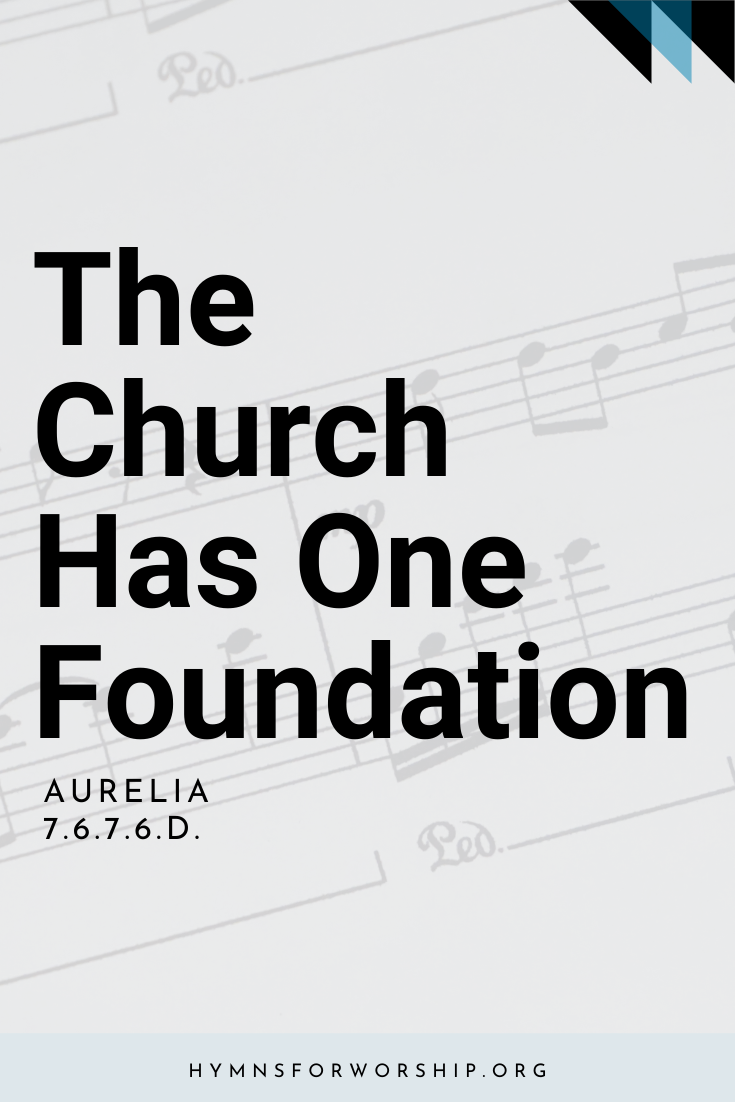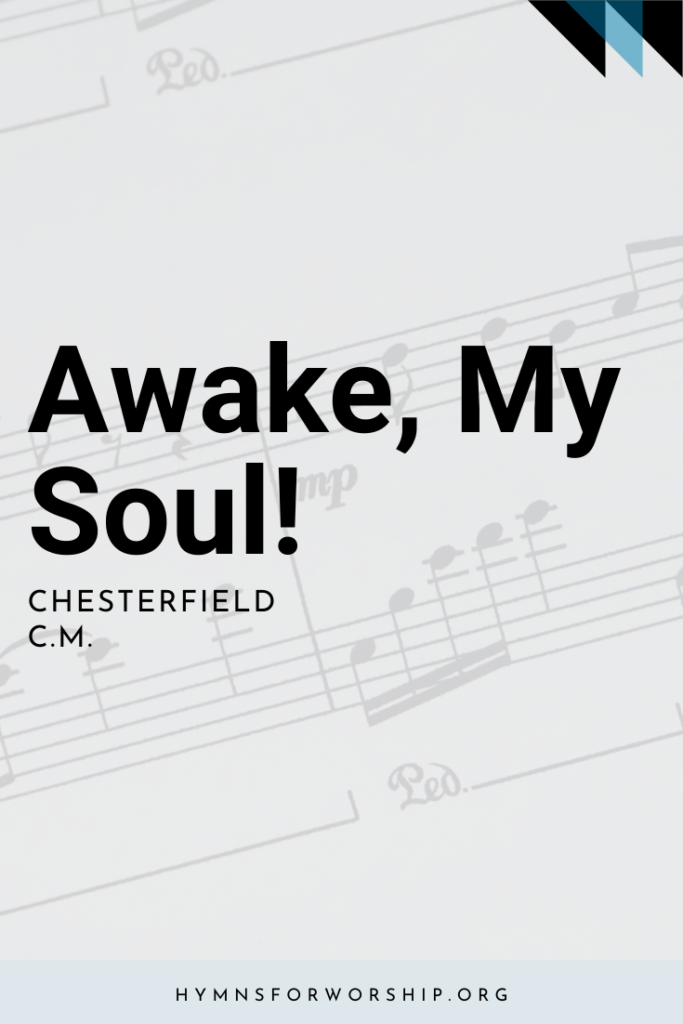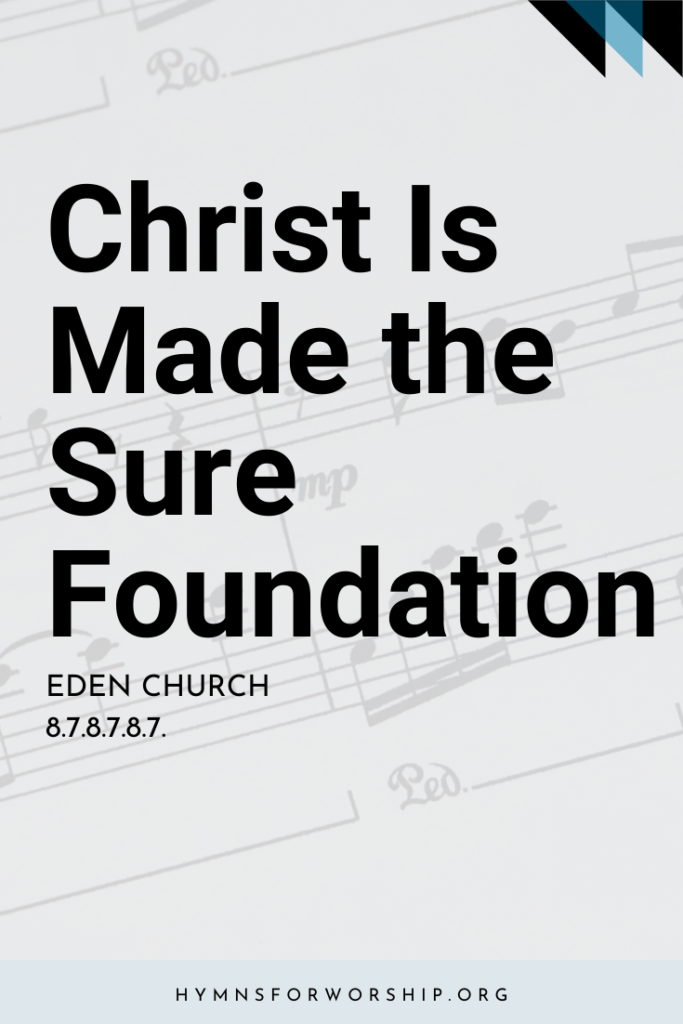CHRISTIAN CHURCH >> COMMUNITY IN CHRIST
SDAH 348
The church’s one foundation
is Jesus Christ her Lord;
she is his new creation
by water and the Word.
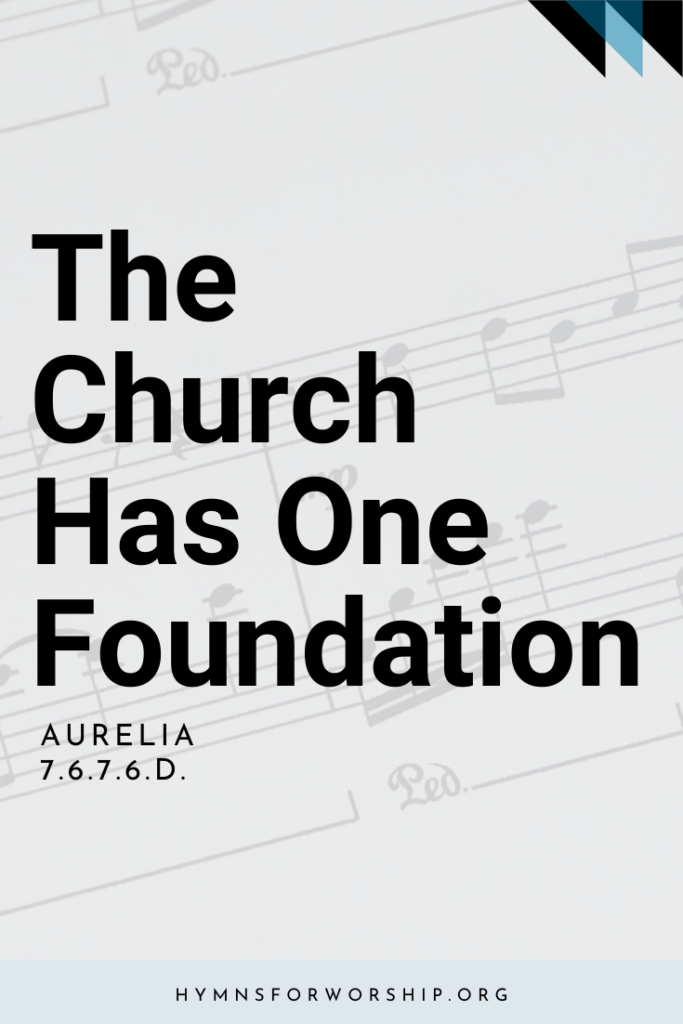

Text
1
The church’s one foundation
is Jesus Christ her Lord;
she is his new creation
by water and the Word.
From heaven he came and sought her
to be his holy bride;
with his own blood he bought her,
and for her life he died.
2
Elect from every nation,
yet one o’er all the earth;
her charter of salvation,
one Lord, one faith, one birth;
one holy name she blesses,
partakes one holy food,
and to one hope she presses,
with every grace endued.
3
Though with a scornful wonder
we see her sore oppressed,
by schisms rent asunder,
by heresies distressed,
yet saints their watch are keeping;
their cry goes up, “How long?”
And soon the night of weeping
shall be the morn of song.
4
‘Mid toil and tribulation,
and tumult of her war,
she waits the consummation
of peace forevermore;
till, with the vision glorious,
her longing eyes are blest,
and the great church victorious
shall be the church at rest.

Hymn Info
Biblical Reference
(a) 1 Cor 3:11; Isa 54:5; 1 Cor 6:20 (b) Eph 4:5 (c) Matt 16:18; Rev 6:10; Ps 30:5
Author
Samuel J. Stone (1839-1900)
Year Published
1866
Hymn Tune
AURELIA
Metrical Number
7.6.7.6.D.
Composer
Samuel S. Wesley (1810-1876)
Year Composed
1864
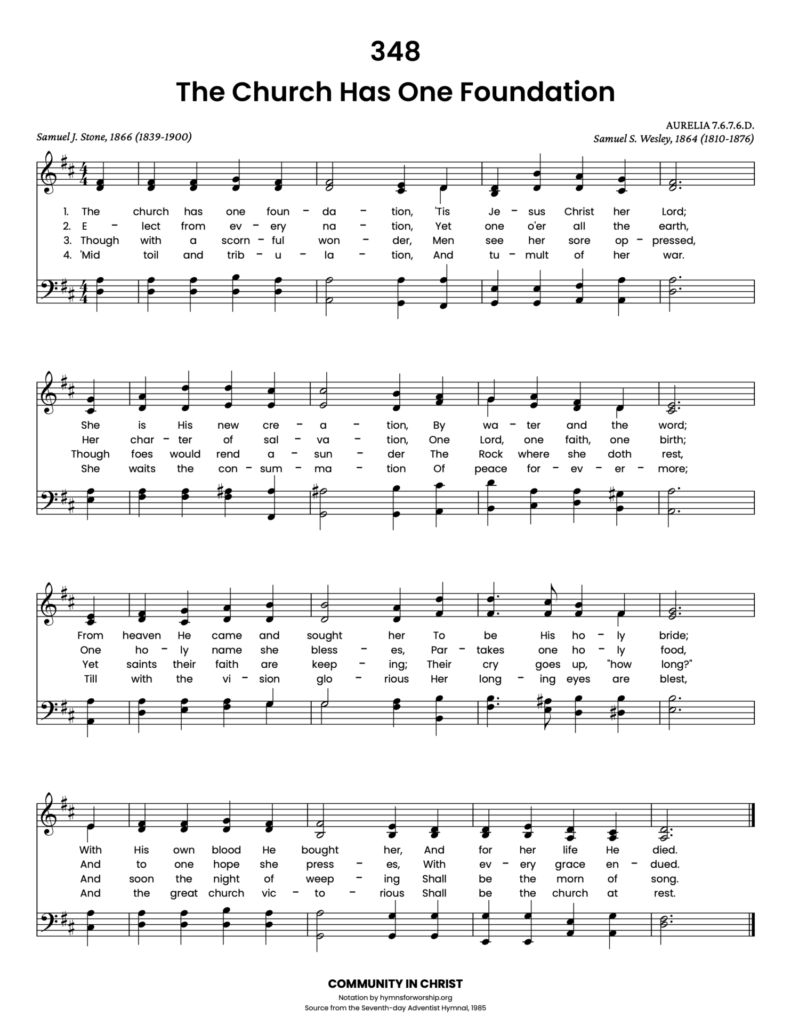
Get the hymn sheet in other keys here
Notes
Make each hymn more meaningful with these helpful tools: Short, ready-to-use hymn introductions for church bulletins, multiple ways to introduce a hymn based on your worship theme and in-depth history and insights to enrich your song service.
Christ is waiting with longing desire for the manifestation of Himself in His church. When the character of Christ shall be perfectly reproduced in His people, then He will come to claim them as His own. {LDE 39.2} (Lesson 4, 3rd Quarter 2022 -Thursday, Character and Community, 7/21/22

